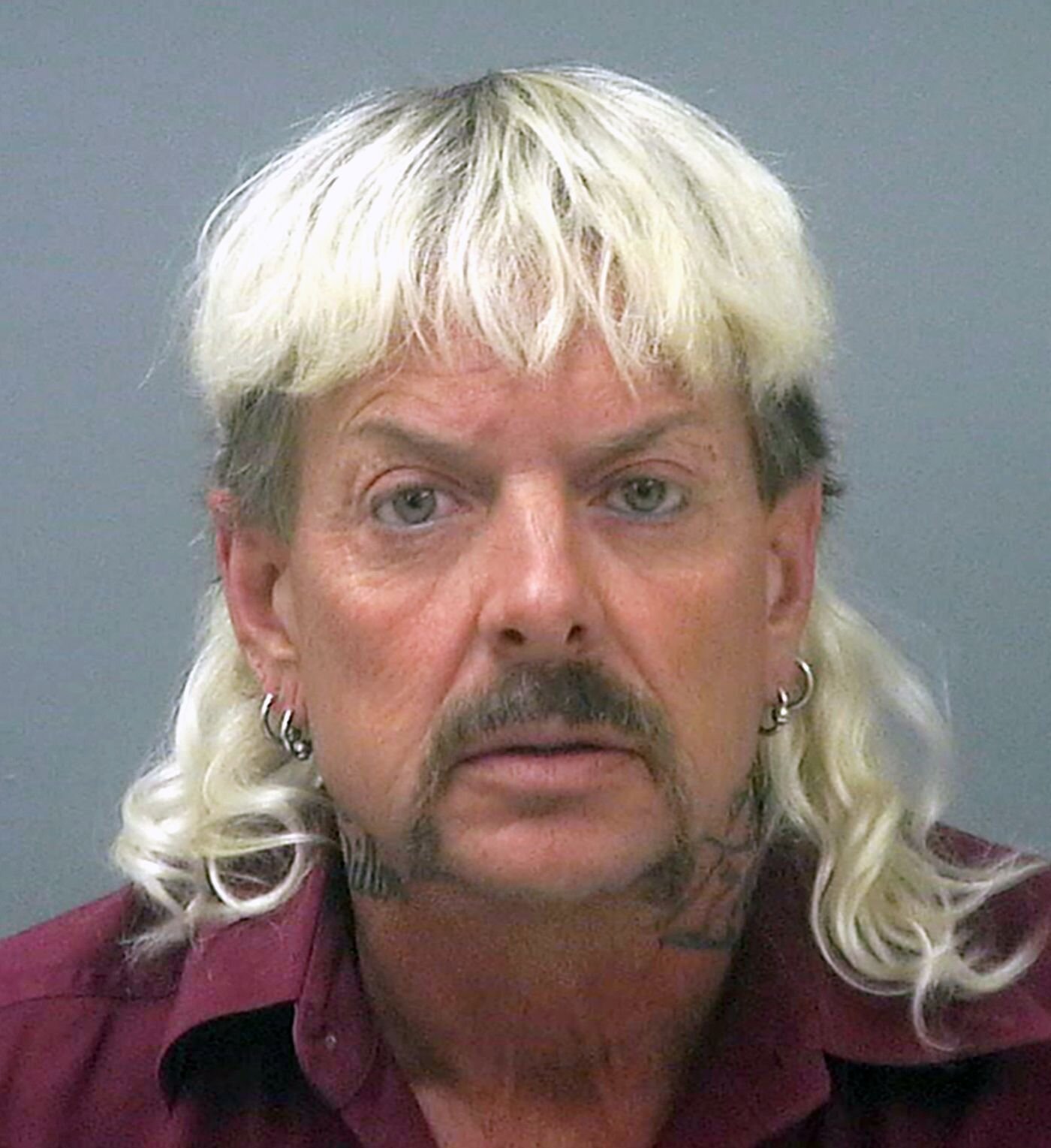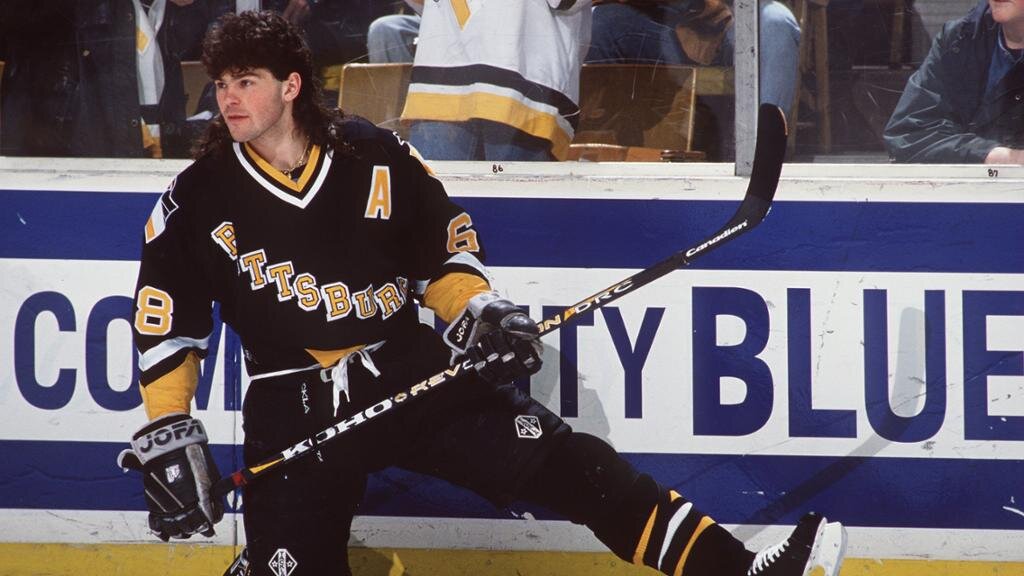2020 took a wild turn in February, and just as always, trends tend to reflect on the current environment. Much like the flapper, influenced by wanting to enjoy one’s youth after the First World War, a not-so-new trend began to repopularize just as our global environment took the hit of a pandemic. While we were still at the beginning of the shock and terror that spread quickly over the globe, many of us binged Netflix’s infamous Tiger King.
Joe Exotic’s mugshot from September 7th, 2018.
There he was, Joe Exotic, The Tiger King, displayed on millions of screens– accent and all– donning his bleached-fried mullet. Thus, of all things to creep into 2020, the mullet– a fashion statement that’s typically reserved for the ‘80s and ‘90s regrets, jokes at the expense of Billy Ray Cyrus and Jerry Seinfeld, or a mugshot in a “Florida Man…” news article– reemerged from its cave.
Miley Cyrus rocking her “pixie mullet” (a mixture of a pixie and a mullet).
But is Tiger King what repopularized the mullet? No one really knows, and no one really understands. It’s certainly not the strangest thing to check off on our 2020 bingo cards, but it’s still peculiar that something that died a painful death in 1995 would become such a hit 25 years later. Regardless, with stars like Miley Cyrus, Zendaya, Billie Eilish, and Lady Gaga rocking The Penguin [a synonym for the mullet], it’s making a full comeback.
Chief Joseph donning the traditional hair of the Nez Perce tribe in America.
Since the mullet trend is in full swing, let’s try to put the stereotypes we associate with the infamous look aside and talk about its history. While David Bowie started the mullet trend in 1972, it dates back as far as Ancient Greece. The first literary description of the mullet can be found in Homer’s The Iliad. In the Roman Empire, a group of young and wealthy chariot racing fans wore the “Hun Cut”, which was shorter in the front, and longer in the back. Fast forward to America in the 1800s; The Nez Perce tribe had the traditional style of spiked up bangs, two braids on the sides, and long hair in the back. Chief Joseph took a rebellious stance against invaders by refusing to conform to European standards. Then, in 1972, David Bowie cut his hair in an act of rebelling against the gender norms of the time, finally giving the mullet its time to shine for nearly two and a half decades.
But, what if I told you there was a place that the mullet’s light kept shining? Or that the trend didn’t even start until 1989? Because, believe it or not, that place exists, and its name is Czechia. In 1989, Czechoslovakia was released from the clutches of the Soviet Union and reunited with western culture. Not long after, the mullet came knocking at their door for a visit, but decided to take permanent residency. Only six years later, the mullet’s light faded to darkness throughout the rest of the world, while in Czechia it had become a beloved companion.
The phenomenon of the mullet never falling out of style in Czechia has not gone unnoticed. For many Eastern Europeans, it’s common knowledge that someone in Europe with a mullet is likely Czech. It’s so popular that the mullet has been dubbed “Czech Hair” or “The Czech Mullet” in Eastern Europe. There’s even a subculture online of people with mullets and Czechia surrounding “Czech Mullet Hunting”, which involves taking a quick picture posting it online. In fact, a few years ago, a Facebook page dedicated to sharing their catches called Czech Mullet Hunters appeared.
Ondřeji Hejmovi rocking this skullet [mullet where the top is bald or balding] in the late ‘70s.
One theory for this strange occurrence is the 40-year-old Squirrel Fur [another synonym for the mullet] atop iconic Czech musician Ondřeji Hejmovi’s head. To give you a better idea as to why he may be the reason Czechia has clung so tightly to the mullet, let me give you some background information. While he was on a three-month visit to Los Angeles (LA) in 1978, Some Girls by The Rolling Stones came out. In Czechoslovakia music from the west was illegal, and the act of listening to western music was an act of rebellion. Only ten years before Ondřeji Hejmovi’s trip, the Soviet Union invaded after a period of reformation in the Czechoslovakian government that had temporarily provided some basic rights, such as freedom of the press. For the eight months they had the right to speak out– also known as Prague Spring– the citizens expressed openly that they wanted total reformation.
After the invasion, the Soviet Union thought they crushed the rebellion, but the fight for reformation had simply moved back underground– and accessing western culture was part of that rebellion. To Ondřeji Hejmovi, listening to The Rolling Stones while sprawled out on a plain couch in LA was a moment that held much more meaning than most of us could even begin to comprehend. Inspired by this experience, he formed the band Žlutý Pes (Yellow Dog) when he returned to Czechoslovakia. Recently, he admitted to dubbing smuggled tapes before Czechoslovakia escaped the vice grip of the Soviet Union in 1989 through The Velvet Revolution.
The Rolling Stones proudly wearing their mullets in the ‘70s.
While to us the mullet was usually considered a mainstream look throughout the ‘70s and ‘80s, it was not common in Czechoslovakia until after The Velvet Revolution. It was a symbol of western culture, which meant that it was a symbol of the fight for reformation. Ondřeji Hejmovi may have been inspired by his experience in LA to not only start Žlutý Pes (Yellow Dog), but also to wear that symbol of western culture.
Jaromír Jágr playing for the Pittsburgh Penguins
Another theory for the Czech Mullet is the renowned Czech hockey player, Jaromír Jágr. Only a year after gaining their freedom, Jaromír Jágr was the first Czech hockey player to declare for the National Hockey League (NHL) draft with the blessing of the government. He won two consecutive Stanley Cup championships with the Pittsburgh Penguins in 1991 and 1992. Even three decades later, Jágr is still considered one of the best point scorers in NHL history. Because he was the first Czech hockey player to declare for the NHL, and has gone down in history as one of the best hockey players, he is extremely admired in Czechia. Due to this national hero’s famous on-again-off-again relationship with his Withered Curtain [another synonym for the mullet] for the last 30 years, the continued love for the mullet is often attributed to him.
But are Ondřeji Hejmovi and Jaromír Jágr’s famous hairstyles why the mullet has stuck around for so long in Czechia? No one really knows, and no one really understands.
While the western world certainly has our fair share of nicknames for mullets, Czechia has a much wider variety due to its popularity. The list of Czech nicknames would be far too long to list every single nickname. However, we have compiled ten of the most interesting ones and translated them for you in this chart below.







![Ondřeji Hejmovi rocking this skullet [mullet where the top is bald or balding] in the late ‘70s.](https://images.squarespace-cdn.com/content/v1/5a18683b64b05f9f4adeb4c7/1600888191930-K46K37EKFDW30UE7NQWC/Ond%C5%99eji+Hejmovi.jpg)


